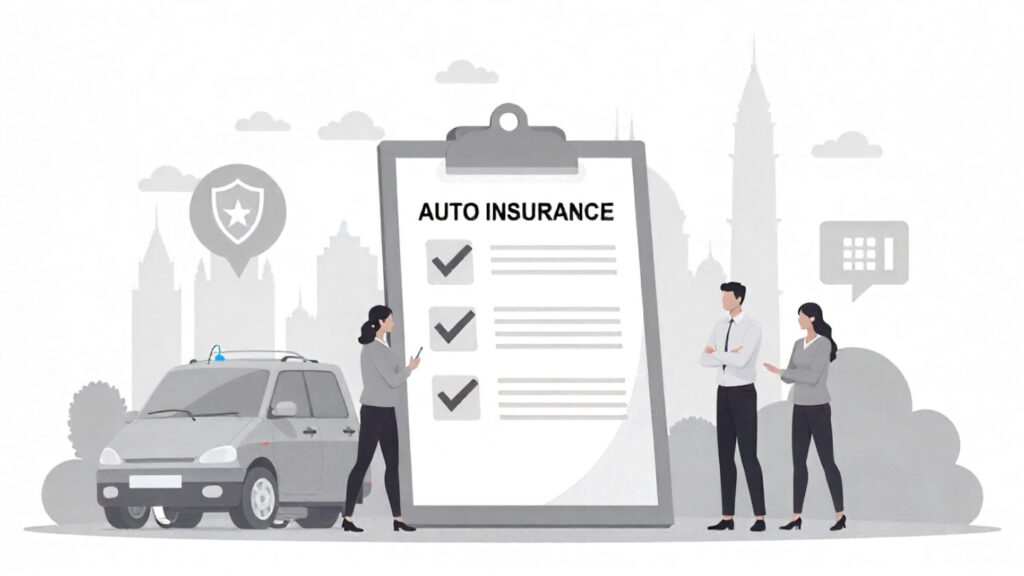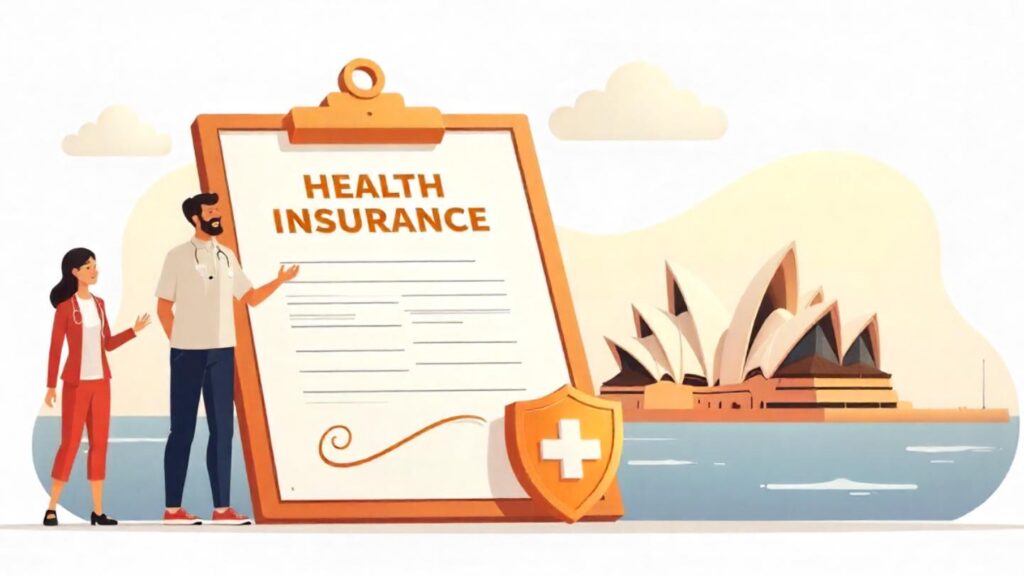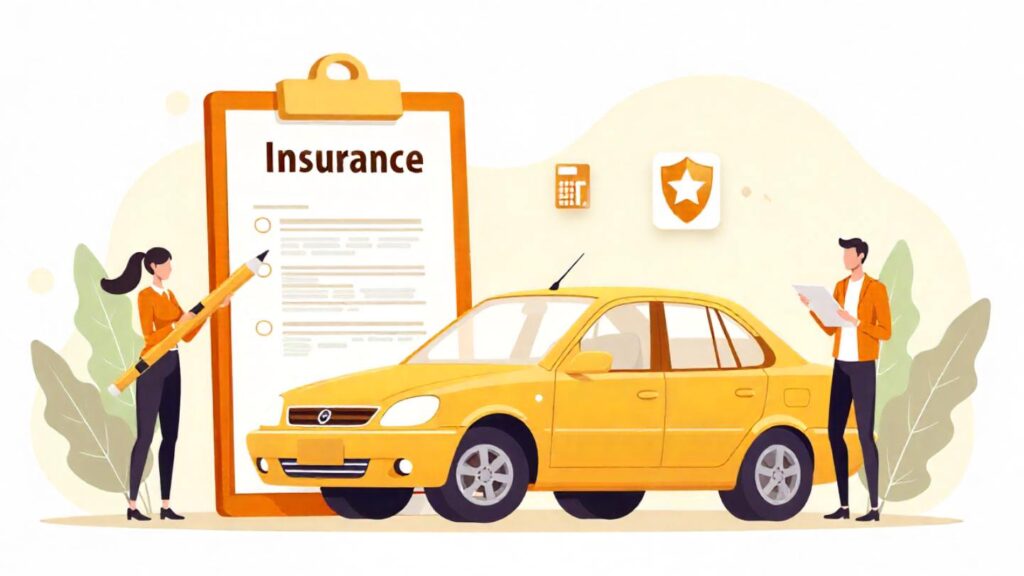Auto insurance is mandatory in almost every state across the USA. Laws require drivers to carry minimum levels of coverage to protect themselves and others on the road. This legal requirement helps ensure financial responsibility in case of accidents or damage.
The primary reason for mandatory auto insurance is to provide a safety net for drivers, passengers, and victims of traffic incidents. It covers costs such as medical bills, vehicle repairs, and property damage. Without insurance, individuals may face significant out-of-pocket expenses.
Beyond legal obligations, auto insurance offers peace of mind. It allows drivers to manage risks while protecting their financial well-being in unpredictable situations. Choosing the right coverage is essential for all vehicle owners.
Types of Auto Insurance Coverage
Understanding the different types of auto insurance coverage helps you choose the best protection for your needs. Each type covers specific risks and expenses related to driving and owning a vehicle.
Liability Coverage Explained
Liability coverage pays for injuries or property damage you cause to others in an accident. It includes two parts: bodily injury liability and property damage liability. Bodily injury liability covers medical expenses, lost wages, and pain and suffering of the other party.
Property damage liability pays for repairs or replacement of the other person’s vehicle or property. This coverage does not protect your own vehicle. Nearly all states require drivers to carry minimum liability coverage by law.
Collision Coverage: What’s Included
Collision coverage helps pay for damage to your car caused by a collision with another vehicle or object, such as a tree or guardrail. It applies regardless of who is at fault in the accident. This coverage typically covers repair costs or the actual cash value of your vehicle if it is totaled.
Keep in mind that collision coverage usually requires you to pay a deductible before the insurance company pays the remaining amount.
Comprehensive Coverage Details
Comprehensive coverage protects your car against events not involving collisions. This includes damage caused by theft, vandalism, fire, falling objects, natural disasters like floods or hail, and animal strikes such as hitting a deer.
Like collision coverage, comprehensive coverage involves a deductible. It is especially useful for those living in areas prone to severe weather or high crime rates.
Uninsured and Underinsured Motorist Protection
Uninsured motorist protection covers your injuries and property damage if an accident happens with a driver who does not have insurance. Underinsured motorist coverage applies when the at-fault driver’s insurance is insufficient to pay for your damages.
These protections ensure that you are not left with large out-of-pocket expenses due to someone else’s lack of coverage.
Medical Payments and Personal Injury Protection
Medical payments coverage, often called MedPay, covers medical expenses for you and your passengers regardless of fault. Personal Injury Protection, or PIP, extends this coverage further to include lost wages, rehabilitation costs, and other related expenses.
PIP is mandatory in some states and optional in others. These coverages help reduce the financial burden after injuries sustained in a car accident.
State-by-State Auto Insurance Requirements
Auto insurance laws vary across the United States, with each state setting its own minimum coverage limits and regulations. Understanding these differences helps you meet legal obligations and avoid penalties.
Understanding Minimum Coverage Limits
Minimum coverage limits refer to the smallest amount of insurance a driver must carry by law. These limits typically include liability coverage for bodily injury and property damage.
For example, states often require drivers to have coverage expressed in three numbers, such as 15/30/5. This means $15,000 per injured person, $30,000 total per accident for bodily injury, and $5,000 for property damage.
Knowing your state’s minimum requirements ensures you comply with the law and maintain basic protection.
Examples of State Requirements (California, Texas, Florida, New York)
California requires drivers to have at least 15/30/5 liability coverage. This includes $15,000 for injury or death of one person, $30,000 for injury or death of multiple people in one accident, and $5,000 for property damage.
Texas has higher minimums of 30/60/25, meaning $30,000 per person, $60,000 per accident for bodily injury, and $25,000 for property damage.
Florida differs by mandating Personal Injury Protection coverage, while liability insurance is optional but strongly recommended.
New York sets limits at 25/50/10, requiring $25,000 per person, $50,000 per accident for bodily injury, and $10,000 for property damage.
How to Check Your State’s Auto Insurance Laws
The most reliable way to check your state’s auto insurance laws is through your state’s Department of Motor Vehicles (DMV) or insurance department website. These official sources provide current coverage requirements, rules for proof of insurance, and penalties for driving uninsured.
Additionally, contacting a licensed insurance agent in your state can help you understand local regulations and select a policy that meets your legal and personal needs.
Factors That Affect Auto Insurance Premiums
Several key factors influence how much you pay for auto insurance. Understanding these elements can help you make informed decisions and possibly lower your premiums.
Driving Record and History
Your driving history plays a major role in determining your insurance costs. Insurance companies review past accidents, traffic violations, and claims to assess your risk level.
A clean driving record typically results in lower premiums, while recent accidents or tickets often lead to higher rates. It is important to drive safely and avoid violations to maintain favorable insurance rates.
Vehicle Type and Age
The make, model, and age of your vehicle affect your insurance premium. Newer cars usually cost more to insure because their repair or replacement value is higher.
Certain models, such as luxury or sports cars, may carry higher premiums due to increased repair costs or theft risk. Conversely, older vehicles often cost less to insure, but you may choose to skip certain coverages depending on their value.
Location and Zip Code Influence
Where you live significantly impacts your auto insurance rates. Urban areas often have higher premiums because of increased traffic, theft, and accident rates. Zip codes with a history of frequent claims or car thefts usually see higher insurance costs.
Additionally, weather patterns in your area can influence premiums if natural disasters are common.
Credit Score Impact on Premiums
In most states, insurance companies use credit scores to help predict the likelihood of a claim. A higher credit score generally indicates responsible financial behavior, which can lead to lower premiums.
On the other hand, lower credit scores may result in higher rates. Some states prohibit the use of credit scores in insurance pricing, so this factor varies by location.
Age, Gender, and Other Personal Factors
Your age and gender also affect insurance premiums. Younger drivers, especially males under 25, often face higher rates because they statistically have more accidents. As drivers gain experience and maintain safe records, their premiums usually decrease.
Other factors such as marital status, education level, and driving habits can also influence insurance costs.
How to Shop for Auto Insurance
Finding the right auto insurance requires research and careful comparison. The process involves more than just looking for the cheapest policy; it means balancing coverage, cost, and customer service to fit your needs.
Comparing Quotes Effectively
Start by gathering quotes from multiple insurance providers. Make sure to provide the same information to each company to receive accurate comparisons. Pay attention to the coverage limits, deductibles, and exclusions included in each quote.
It is also important to consider the insurer’s reputation for claims handling and customer service. Reviewing online ratings and customer reviews can help you choose a reliable company.
Benefits of Bundling Insurance Policies
Many insurance companies offer discounts when you bundle multiple policies, such as auto and home insurance, under the same provider. Bundling can simplify your payments and usually lowers your overall premiums.
Even if you only have renters insurance or another type of coverage, combining it with your auto insurance might provide savings worth exploring.
Common Discounts to Ask For
Be proactive in asking about discounts. Common options include safe driver discounts, good student discounts, low mileage discounts, and discounts for installing anti-theft devices or safety features in your car.
Some insurers also offer reduced rates for paying your premium in full upfront or for signing up for automatic payments.
The Role of Online Comparison Tools vs. Agents
Online comparison tools make it easy to view multiple quotes quickly and conveniently. They can help you identify competitive pricing and understand coverage differences.
However, working with a licensed insurance agent provides personalized advice tailored to your specific situation. Agents can also help explain complex policy details and assist with claims. Combining both methods can lead to the best outcome.
Tips to Lower Your Auto Insurance Costs
Reducing your auto insurance premiums is possible by adopting simple habits and making informed choices. These strategies can help you save money without sacrificing necessary coverage.
Maintaining a Clean Driving Record
One of the most effective ways to keep your insurance costs down is by driving safely and avoiding accidents or traffic violations. Insurance companies reward drivers with clean records through lower premiums because they represent less risk.
Regularly practicing defensive driving and obeying traffic laws can make a significant difference over time.
Choosing Higher Deductibles
Opting for a higher deductible means you agree to pay more out of pocket before insurance coverage kicks in. While this increases your financial responsibility after an accident, it usually results in lower monthly or annual premiums.
Consider how much you can comfortably afford to pay in case of a claim before raising your deductible.
Taking Defensive Driving Courses
Completing an approved defensive driving course shows insurers that you are committed to safe driving. Many companies offer discounts to drivers who take these courses, sometimes reducing premiums for several years.
Defensive driving courses also refresh your skills and awareness, which contributes to safer roads.
Using Usage-Based Insurance Programs
Some insurers offer usage-based insurance programs that track your driving habits through a mobile app or device installed in your car.
These programs reward safe driving behaviors such as low mileage, smooth braking, and avoiding nighttime driving with discounts on your premiums. If you are a careful driver, participating in these programs can lower your costs substantially.
What to Know Before Buying Auto Insurance
Buying auto insurance involves more than choosing a price. Understanding key aspects ensures that you get the right protection and avoid surprises later.
Reading the Fine Print: Coverage Exclusions
Before purchasing a policy, carefully review what is excluded from coverage. Common exclusions include mechanical breakdowns, routine maintenance, and damage from intentional acts.
Knowing these limitations helps set realistic expectations and avoid unexpected expenses. If certain risks are important to you, discuss additional coverage options with your insurer.
When to Update or Review Your Policy
Regularly reviewing your auto insurance policy ensures it matches your current situation. Life changes such as moving to a new state, buying a new car, or adding a teen driver can affect your coverage needs and premiums.
Experts recommend reviewing your policy at least once a year or after major life events. Updating your policy on time helps maintain proper coverage and may reveal opportunities for discounts.
Importance of Documentation and Claims Process
In case of an accident or damage, having detailed documentation speeds up the claims process. Always keep copies of your insurance policy, proof of insurance, and any communication with your insurer.
After an incident, document the scene with photos, gather witness information, and report the claim promptly. Organized records reduce delays and increase the likelihood of a fair claim settlement.
Frequently Asked Questions
What is the minimum auto insurance required in the USA?
Minimum insurance requirements vary by state but usually include liability coverage for bodily injury and property damage. Some states also require personal injury protection or uninsured motorist coverage. To be sure, visit your state’s Department of Motor Vehicles website for the most current regulations.
How much does auto insurance cost on average in the USA?
The average annual cost of auto insurance typically falls between $1,000 and $1,500. However, rates vary widely depending on factors such as your location, driving history, vehicle type, and coverage level.
Can I drive legally without auto insurance in the USA?
In almost every state, driving without auto insurance or proof of financial responsibility is illegal. Failing to carry the required coverage can lead to fines, license suspension, and other penalties.
How do insurance companies determine my premium?
Insurers evaluate risk by considering your driving record, the type and age of your vehicle, your geographic location, age, credit score where allowed, and sometimes gender. This data helps them estimate the likelihood of a claim and set your premium accordingly.
What discounts can I get on auto insurance?
Common discounts include safe driver rewards, bundling multiple policies such as auto and home insurance, good student discounts, low annual mileage, and completion of defensive driving courses. Always ask your insurer about all available discounts.
What does comprehensive coverage protect against?
Comprehensive coverage protects your vehicle from non-collision related incidents. This includes theft, vandalism, fire, weather events like hail or floods, and damage from falling objects such as tree branches.



